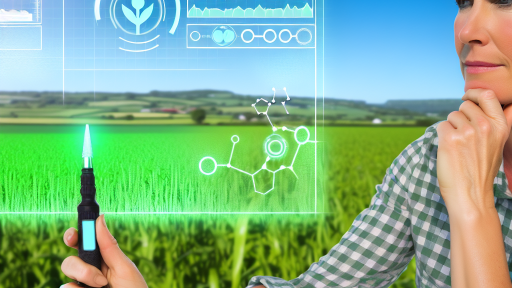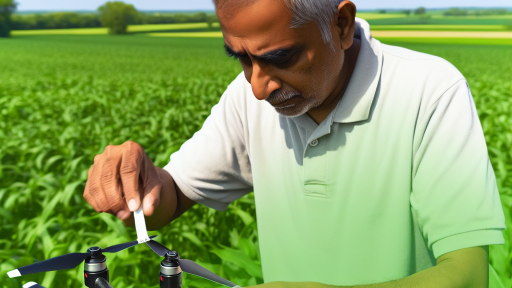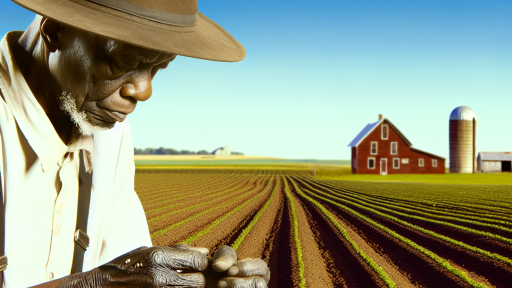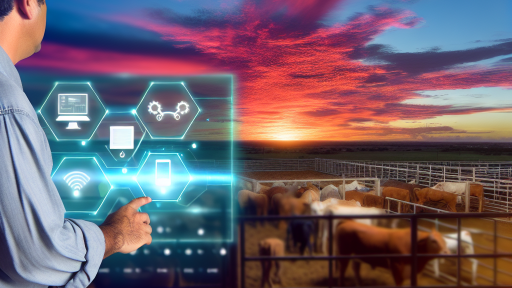Introduction to Agricultural Drones: Evolution and Technology
Overview of Agricultural Drones
Agricultural drones have transformed modern farming practices.
They provide innovative solutions to optimize various agricultural processes.
Farmers leverage these devices for tasks like crop monitoring and field mapping.
The Evolution of Drone Technology
The journey of drone technology began with military applications.
Eventually, advancements filtered into commercial sectors, including agriculture.
As technology progressed, drones became smaller, cheaper, and more efficient.
Today, farmers can access affordable drones equipped with cutting-edge sensors.
Current Drone Technologies in Agriculture
Modern agricultural drones come with various technologies for diverse applications.
Multispectral cameras allow for detailed analysis of crop health.
Thermal imaging provides insights into soil moisture levels.
Additionally, GPS technology enhances mapping and navigation accuracy.
Benefits of Using Drones in Agriculture
Drones significantly improve efficiency in farming operations.
They reduce the time required for data collection and analysis.
Moreover, they allow for more precise application of fertilizers and pesticides.
This precision can lead to cost savings and reduced environmental impact.
Transform Your Agribusiness
Unlock your farm's potential with expert advice tailored to your needs. Get actionable steps that drive real results.
Get StartedThe Future of Agricultural Drones
The future holds exciting possibilities for agricultural drone technology.
Integrating artificial intelligence can enhance data analysis and decision-making.
Furthermore, advancements in battery life may extend operational capabilities.
Ultimately, these innovations will enable farmers to maximize yields even further.
Understanding Crop Yield and Its Importance in Agriculture
Defining Crop Yield
Crop yield refers to the amount of agricultural produce harvested per unit area.
This measurement significantly affects food availability globally.
Yields vary based on crop type, agricultural practices, and environmental conditions.
The Role of Crop Yield in Food Security
High crop yields contribute directly to food security.
They ensure that populations have sufficient food access.
Increasing yields can help alleviate hunger and poverty.
Economic Impact of Crop Yield
Crop yields influence national and global economic stability.
High yields can lead to increased farmer incomes and economic growth.
Additionally, they can reduce food prices for consumers.
Factors Influencing Crop Yield
Several factors impact crop yield effectiveness.
These include soil quality, rainfall, temperature, and pest management.
Moreover, farming techniques and technology adoption play critical roles.
Advancements in Agricultural Technology
Innovations enhance crop yield through improved methods.
Technological tools such as precision agriculture optimize resource use.
Furthermore, genetic engineering creates higher-yielding crop varieties.
Environmental Considerations
Maximizing yields must consider environmental sustainability.
Over-reliance on chemical inputs can degrade soil health.
Thus, adopting sustainable practices ensures long-term yields.
How Drones Collect Data: Sensors and Imaging Techniques
Overview of Drone Technology
Drones have revolutionized the agricultural landscape.
They provide farmers with precise data collection methods.
Showcase Your Farming Business
Publish your professional farming services profile on our blog for a one-time fee of $200 and reach a dedicated audience of farmers and agribusiness owners.
Publish Your ProfileEquipped with various sensors and cameras, drones capture critical information.
This technology enables a new level of efficiency in farming.
Types of Sensors Used in Agricultural Drones
Different sensors serve distinct purposes in agriculture.
Optical sensors measure light reflecting from crops.
Multispectral sensors capture data in multiple wavelengths.
This allows farmers to monitor plant health accurately.
Thermal Sensors
Thermal sensors detect temperature variations in crops.
They help identify irrigation issues and stress in plants.
Farmers can use this data to optimize water usage.
Lidar Sensors
Lidar sensors use laser light to create three-dimensional maps.
They provide detailed information about crop height and biomass.
This information aids in planning planting and harvesting strategies.
Imaging Techniques Employed by Drones
Drones utilize various imaging techniques for effective data collection.
One common technique is photogrammetry.
This involves taking overlapping images to create 3D models.
NDVI Imaging
Normalized Difference Vegetation Index (NDVI) imaging is popular among farmers.
It evaluates vegetation health using infrared light data.
Hence, it identifies stressed areas needing attention.
3D Mapping and Modeling
3D mapping provides a comprehensive view of the farm.
This technology supports better decision-making regarding land use.
Farmers can visualize their fields more effectively.
Benefits of Using Drones
Drones enhance overall farming efficiency significantly.
They help gather real-time data promptly.
Additionally, they minimize human effort and errors.
Ultimately, drones lead to better crop management and yield optimization.
Discover More: Cost-Effective Drone Solutions For Small Farms
Precision Agriculture: The Role of Drones in Monitoring Crop Health
Introduction to Precision Agriculture
Precision agriculture optimizes field-level management regarding crop farming.
This modern approach uses technology to monitor and manage field variability.
Drones play a significant role in enhancing efficiency and productivity.
The Advantages of Drone Technology
Drones provide real-time data on crop conditions.
This technology allows farmers to identify issues quickly.
Consequently, farmers can make informed decisions to improve outcomes.
Monitoring Crop Health
Drones equipped with multispectral sensors assess crop health accurately.
They can capture images that detect plant stress and diseases.
Using these images, farmers gain insights into crop needs.
Data Analysis and Insights
Analyzing drone-collected data helps identify patterns in crop health.
This analysis leads to targeted interventions for nutrient deficiencies.
Moreover, it enables farmers to apply treatments only where necessary.
Enhancing Yield with Drones
By using drones for monitoring, farmers can maximize crop yield.
Timely interventions based on drone data significantly improve harvests.
Showcase Your Farming Business
Publish your professional farming services profile on our blog for a one-time fee of $200 and reach a dedicated audience of farmers and agribusiness owners.
Publish Your ProfileAs a result, farmers not only increase yield but also reduce costs.
Implications of Drone Integration in Agriculture
Integrating drones into precision agriculture is revolutionizing farming.
Farmers are witnessing enhanced efficiency and productivity.
Ultimately, advanced agricultural drones play a crucial role in sustainable farming.
Find Out More: Improving Supply Chain Efficiency With Blockchain In Agriculture
Integrating Drones with GIS and Other Agricultural Technologies
Enhancing Precision Agriculture
Drones play a pivotal role in precision agriculture.
They provide real-time data collection over large areas.
This data enhances decision-making processes for farmers.
For instance, drones can monitor crop health efficiently.
Moreover, they offer insights into irrigation needs.
Farmers can adjust practices based on detailed analytics.
Collaboration with Geographic Information Systems (GIS)
Integrating drones with GIS technology maximizes productivity.
GIS offers spatial data that drones capture visually.
This combination aids in creating detailed maps.
Farmers can visualize their land’s attributes better.
For example, they can identify soil variability and crop patterns.
This information helps in resource allocation decisions.
Combining Other Agricultural Technologies
Incorporating sensors with drones enhances agricultural efficiency.
Sensors can measure soil moisture and temperature.
Drones equipped with these sensors provide detailed assessments.
This integration allows for targeted interventions in crops.
Furthermore, drones can work alongside autonomous machinery.
For instance, they can guide tractors to specific areas of need.
Benefits of Integration
The integration of these technologies reduces waste significantly.
It conserves resources such as water and fertilizers.
Consequently, farmers see improved yield outcomes.
Additionally, using drones minimizes labor costs.
Farmers can focus on strategic initiatives instead of manual tasks.
The overall efficiency of farming operations greatly increases.
Implementing Drone Technology in Agriculture
Farmers should begin by selecting appropriate drone technology.
They must consider the specific needs of their operations.
Next, training on drone operation is vital for success.
Collaboration with professionals can facilitate successful implementation.
After integration, continuous monitoring and adjustments are necessary.
This ensures the technology meets evolving agricultural challenges.
Discover More: Blockchain Solutions For Efficient Data Management In Farming
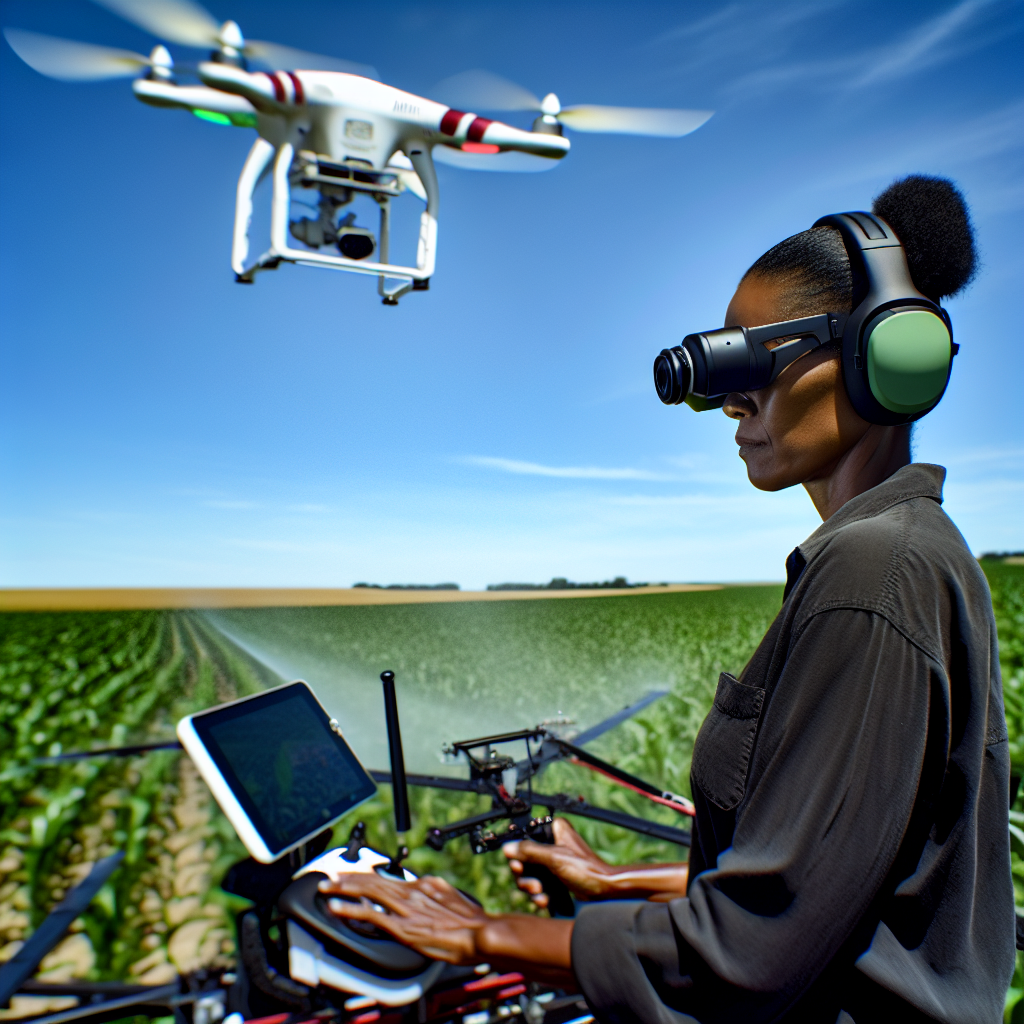
Case Studies: Successful Implementation of Drones in Farms
Precision Farming in California
A grape farm in Napa Valley adopted drone technology.
The farm aimed to enhance its yield and reduce costs.
Drones provided aerial imagery, allowing for precise crop monitoring.
Management identified problem areas, improving irrigation efficiency.
Showcase Your Farming Business
Publish your professional farming services profile on our blog for a one-time fee of $200 and reach a dedicated audience of farmers and agribusiness owners.
Publish Your ProfileAs a result, the farm increased grape quality and quantity.
Crop Health Monitoring in Iowa
A soybean farm in central Iowa utilized drones for crop health assessments.
The drones captured multispectral images to analyze plant health.
Farmers detected disease outbreaks and nutrient deficiencies early.
This proactive approach reduced pesticide usage significantly.
Consequently, the farm improved overall crop production while saving costs.
Field Mapping in Texas
In South Texas, a cotton farm integrated drones for field mapping.
Drones mapped variations in soil moisture across the fields.
The insights enabled farmers to apply water more efficiently.
This optimization led to reduced water usage without sacrificing quality.
Moreover, farmers reported a noticeable boost in crop yields.
Agricultural Research in Ohio
An agricultural research institution in Ohio employed drones for data collection.
Drones were instrumental in studying cover crops’ effects on soil health.
The research documented improvements in soil organic matter.
Additionally, researchers showcased drones’ potential for large-scale assessments.
Ultimately, their findings influenced local farming practices positively.
Learn More: The Future Of Farming: Embracing Agri-Fintech For Long-Term Success
Challenges and Limitations of Using Drones in Agriculture
Regulatory Hurdles
Farmers face numerous regulatory challenges when using drones.
The Federal Aviation Administration (FAA) imposes strict guidelines on drone operation.
Compliance with these regulations can be time-consuming and complex.
Farmers must often acquire special licenses to operate drones legally.
Additionally, restrictions on flight altitudes and airspace add further complications.
Technical Limitations
The technology behind agricultural drones continues to evolve.
However, technical limitations still impact their effectiveness.
Battery life remains a significant concern for many users.
Limited flight times restrict the area that can be surveyed in one go.
Moreover, adverse weather conditions can hinder drone operations.
Cost Considerations
Investing in advanced agricultural drones can be costly.
Farmers must consider initial purchase costs and ongoing maintenance expenses.
Not every farm can afford the latest technology due to these costs.
Additionally, potential insurance costs can deter farmers from drone adoption.
Data Management Challenges
Drones generate vast amounts of data during operations.
Managing and analyzing this data can overwhelm some farmers.
Agricultural drones require specialized software for data processing.
This software often involves a steep learning curve for users.
If farmers lack proper training, they may not fully utilize drone capabilities.
Integration with Existing Systems
Integrating drones with existing farm management systems poses challenges.
Incompatible technologies can complicate data flow and communication.
Farmers may need to invest in additional tools to ensure compatibility.
This can create redundancy, leading to increased operational costs.
Showcase Your Farming Business
Publish your professional farming services profile on our blog for a one-time fee of $200 and reach a dedicated audience of farmers and agribusiness owners.
Publish Your ProfileFurthermore, lack of technical support can leave farmers stranded.
Future Trends: The Next Generation of Agricultural Drones
Innovative Technology Advancements
The next generation of agricultural drones features advanced technology.
These advancements focus on enhanced imaging capabilities.
For example, multispectral and hyperspectral sensors are now common.
Moreover, these sensors yield critical data on crop health.
This data allows farmers to make informed decisions.
Increased Automation
Automation plays a major role in modern agricultural drones.
These drones can perform tasks with minimal human intervention.
Tasks include planting seeds and applying pesticides.
Farmers can optimize their work schedules through automation.
This leads to higher efficiency and reduced labor costs.
Real-Time Data Analytics
Real-time analytics increasingly shape the agricultural landscape.
Drones provide instant data on field conditions.
Farmers can access this data via mobile applications.
This accessibility allows for timely responses to issues.
Consequently, it improves overall crop yield and quality.
Sustainability Initiatives
Next-generation drones promote sustainable farming practices.
Farmers utilize drones to precisely assess resource needs.
This precision reduces waste and minimizes environmental impact.
Additionally, many drones support integration with eco-friendly technologies.
Sustainability has become a significant priority in agriculture.
Expansion of Use Cases
The variety of uses for agricultural drones continues to expand.
These drones can monitor livestock and assess soil quality.
Furthermore, they assist in precision irrigation strategies.
As technology improves, so will the applications of drones.
This diversity enhances productivity across different farming sectors.
Additional Resources
Agricultural Technology For New & Advanced Farming Solutions
Agriculture’s technology future: How connectivity can yield new growth

